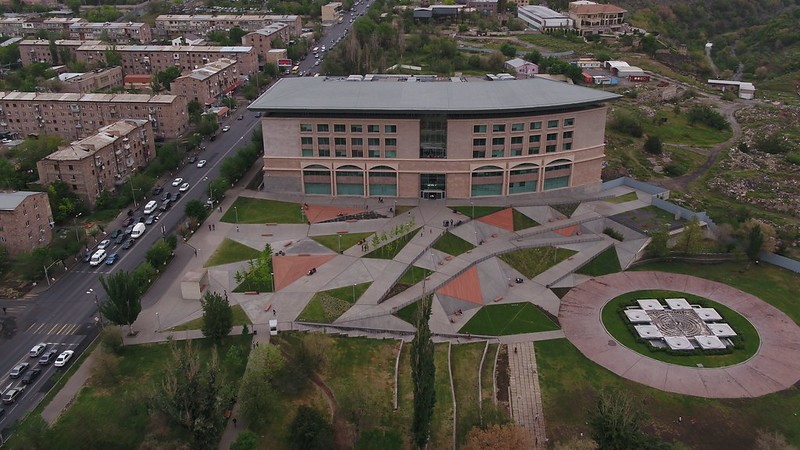TUMO Center for Creative Technologies, Yerevan, Armenia
In recent years, Armenia has eagerly embraced the opportunities provided by the digital age. The country is developing into a technological hub that has proven itself capable of competing on the world stage. TUMO Center for Creative Technologies is a key milestone in these endeavours, combining the newest technologies with local cultural heritage to provide young Armenians with a cost-free education. The programme is currently being implemented in four cities in Armenia and one city in France. TUMO was founded and is primarily financed by Sam Simonian of The Simonian Educational Foundation. Partnerships with the Central Bank of Armenia and the Armenian General Benevolent Union have enabled the establishment of further centres in Armenia, while EU funding has supported the development of one of the Center’s projects.
At TUMO, 12 to 18 year-olds from all backgrounds combine their local, cultural heritage with state-of-the-art international tools, engaging in cultural learning targets such as animation, game development, music, writing and robotics. An important example is a project organised in partnership with the Smithsonian Institute and CyArk, where a group of teenagers worked on the 3D mapping of the ancient monastery of Noravank and the Areni cave complex, two iconic heritage sites in Armenia.
The jury noted that “TUMO has a clear understanding of learning processes and has provided an interdisciplinary approach, allowing for the involvement of groups of sensitive adolescents in various fields of education through the use of new heritage based technologies. The educational activities have led to the digitisation of aspects of both tangible and intangible cultural heritage”.
The educational method applied by TUMO is highly innovative: it alternates between independent learning activities (e-learning), hands-on workshops and project labs. This hybrid educational model helps students to develop a variety of soft skills ranging from teamwork, initiative-taking and empathy, to effective communication. Out-of-the-box thinking has a central place in all activities. “TUMO provides a combination of workshops and self-learning activities that have proved to be an advanced model for cultural heritage education”, the jury stated, “It has provided hands-on, practical activity with projects that are tailored to meet personal needs and common objectives.”
The results of the activities implemented since 2011 are more than impressive. Four educational centers have already been built and are fully operational. They have reached over 30,000 students with 14,000 students currently enrolled. The successful formula of education used by TUMO is being exported as 2018 has seen the opening of new centres in Paris and Beirut. “The project has demonstrated the potential for the expansion of existing plans in the establishment of new centres in other European cities,” the jury noted.
More information
www.tumo.org

